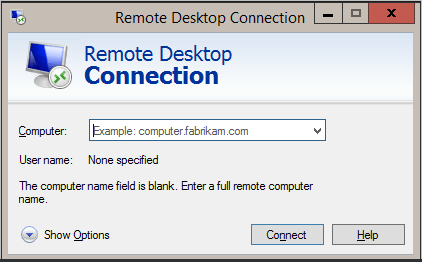Here is how to secure your Remote Desktop services and stop hackers from attempting to brute force passwords to your work computers
If you’re not worried about hackers remotely accessing your computers then let me educate you about RDP (the number one remote access tool).
What is RDP & RDC (or Remote Desktop Protocol AKA Remote Desktop Connection)

Remote Desktop is the service that most people use to remotely access their work and home computers. If you use an icon like this to access a computer remotely, then you are using RDP.
RDP is a Free Windows service that allows for the remote access and management of all the files, programs, and services on your computer.
It is a fantastic tool, the only problem is that hackers love it too because it gives them the opportunity to get in and deploy their viruses.
How Hackers get access to your work computer

Hackers use bots to scour the internet for computers that have RDP enabled.
Once a bot finds a remotely accessible computer, it starts a brute-force attack.
Brute force attacks are means by which hackers use a program to send a constant stream of password attempts at your computer in hopes that it will eventually guess correctly.
Since people sometimes leave passwords blank or use simple passwords, it’s often only a matter of time before they successfully guess your password.
Once they guess the password, they get in and deploy their Ransomware and Viruses.
The RDP services have also been known to have flaws (one major one was just found this spring), which allows hackers an even easier time in getting into your computer.
Here is how to secure your computers RDP remote access
The best way to protect your computer from falling victim to RDP hacking is via a 2 Step Plan:
1) Get a program like RDP guard which blocks the repeated attempts at logging in
Since hackers send thousands, if not millions, of password attempts at your computer this program blacklists each IP address that unsuccessfully tries a login.
By blocking those IPs from trying to log in, it means that hackers who have to try and get at you from thousands of different IP addresses (which most of them cannot do)
2) Use Multi-Factor Authentication with tools like DUO
If your password gets loose, then you can be in a world of hurt.
To mitigate that risk, the number 1 thing you can do is turn on Multi-Factor Authentication.
Since Windows does not have MFA built into it, we recommend going with a service like DUO.
DUO turns on a security feature that will send a text or push to you before allowing access to your computers
3) Setup a VPN
The best way to secure RDP is by not having it open to the outside world. If hackers see an open port, they will bombard it with password attempts and eventually get in (or lock your accounts)
So get a firewall with a VPN disable RDP through your firewall and use a VPN as the first step to accessing your network




